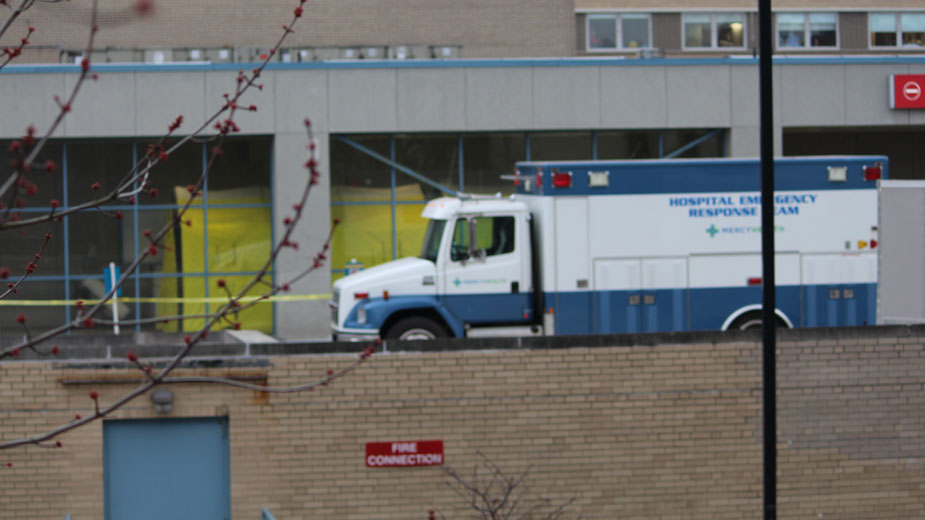Why Does Mahoning Lead Ohio in COVID-19 Deaths?
YOUNGSTOWN, Ohio — It’s too early to determine exactly why Mahoning County, which has a quarter of the population of Ohio’s two largest counties, leads the state in the number of deaths resulting from coronavirus.
Statistically, half of the county’s deaths from COVID-19 were those considered to be most vulnerable to the global pandemic tightening its grip on the United States – the elderly.
A breakdown of statistics for Mahoning County provided by the Ohio Department of Health shows that three males and two females in the 80-plus age range have died from COVID-19, the disease spread by coronavirus.
Dr. James Kravec, chief clinical officer for Mercy Health-Youngstown and medical director of Mahoning County Public Health, cautions the data is too narrow to provide any scientific determinations.
“I think it’s truly going to take some time. Unfortunately, it’s too early. As far as Mahoning’s high death rates, although any deaths are too many, we still have a small amount of deaths,” Kravec says. “I know we have a lot, but it’s too small to make any conclusions about it yet only because I don’t think the data is wide enough yet.”
Scripps Gerontology Center, at Miami University in Ohio, shows the percentage of people 60 and older living in Mahoning County is 29.7%, of which 11% are 85 years and older. The number of people aged 60-plus in Cuyahoga and Franklin is 26.2% and 18.1%, respectively.
“We’re just not sure what this means. I know there is a higher geriatric population in the Mahoning Valley as opposed to other parts of the state,” Kravec says. “I’m looking at data from Miami University, and we’ll continue to see those numbers grow, but we’re still pretty high as far as older population, and that may have something to do with it.”
As of 2 p.m. April 1, the Ohio Department of Health reported 2,547 cases of COVID-19 statewide, 679 hospitalizations and 65 deaths. But the numbers are in a constant state of flux as counties are continuously updating death rates. Trumbull County reported two additional deaths Wednesday after the state’s 2 p.m. daily update, increasing the death toll to 67.
The state reports Mahoning County had 177 total cases of COVID-19 with 78 hospitalizations. The county also ranks third in the state in total case count.
Ohio Department of Health Director Dr. Amy Acton says a surge is expected in the next couple of weeks. Gov. Mike DeWine has taken aggressive steps to stop the spread of the virus by ordering schools, bars and restaurants closed to dine-in service, ordered a moratorium on elective surgeries, and on Wednesday extended the school closure order to May 1. He says the measures are meant to extend the time of a surge in cases from hitting all at once and overwhelming hospital systems.
Hospitals are building capacity, expanding intensive care beds and making plans for overflow patients at community facilities. Kravec says Mercy Health is planning for a worst-case scenario.
“This is a catastrophic time and our counties are planning for what ODH projections are saying that by a certain date we need to expand capacity 200% to 300% of our normal volumes,” he says. “Hopefully this is all for naught, but you need to plan. The community efforts have been wonderful. The good part of what we’re doing is social distancing. We’re trying to lower the curve. That will absolutely save lives.”
U.S. Rep. Tim Ryan said at a press conference Wednesday he has been in talks with local hospitals, Emergency Management Agencies and Maj. Gen. John C. Harris Jr., adjutant general of Ohio’s National Guard and the Army Corps of Engineers, about how to deal with an overflow of COVID-19 patients and patients who do not have the virus but require hospitalization.
“We’re having conversations with what [overflow plans] will look like and whether it will be at Covelli [Centre] or YSU,” Ryan said. “It needs to be a centralized facility for Mahoning, Trumbull and Columbiana counties. Hopefully, we will have everything we need from a bed capacity perspective.”
Ryan also said that Ed Muransky, who owns Southwoods Health, is a key private sector partner. Muransky has offered to accept overflow of patients at Southwoods’ sites, the congressman said.
The highest number of cases in Ohio, according to the state, is iin Cuyahoga County with 527 confirmed cases, Franklin County with 325 positive cases, followed by Mahoning County with 153 cases. While there is a varying degree in number of cases, the death rate attributed to the virus flips Mahoning to the top followed by Cuyahoga with six and Franklin with three deaths.
Mahoning County pales in comparison to the number of people living in two of the largest counties in Ohio. Census estimates, as of July 2019, show Mahoning County’s population at 228,683, Franklin County’s at 1.316 million, and Cuyahoga County’s at 1.235 million people.
During DeWine’s daily coronavirus briefings, Acton has reiterated that older adults and people with compromised immune systems are at high risk of life-threatening complications from COVID-19. She adds that initial perceptions that COVID-19 was only affecting older adults have been disproved; Ohio’s median age of case is 53.
Acton also points out that people with chronic conditions such as cardiovascular disease, diabetes and obesity are also at risk
Mahoning County residents reflect the majority of these risk factors, according to the 2020 County Health Rankings and Roadmaps report issued by the Robert Wood Johnson Foundation and University of Wisconsin’s Population Health Institute.
Mahoning County ranks 72 out of 88 counties in health outcomes. There are 9,100 premature deaths compared to the state average of 8,600 and 32% of residents are obese.
Copyright 2024 The Business Journal, Youngstown, Ohio.



